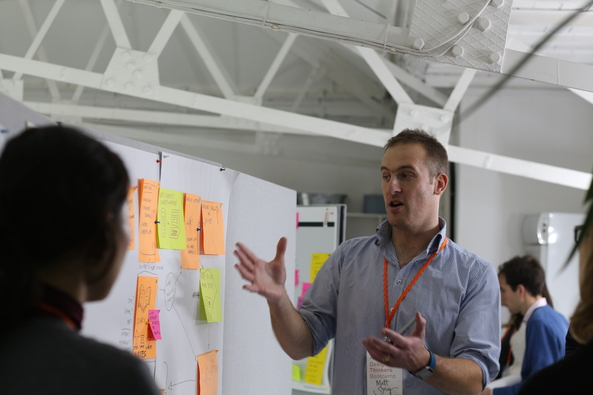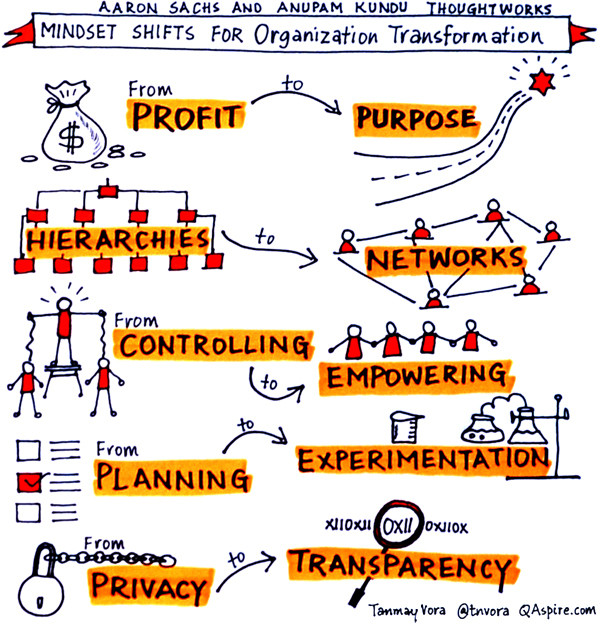Jeanne Liedtka is a strategy professor at the University of Virginia’s Darden Graduate School of Business, where she works with MBA students and executives on design-led approaches to innovation and growth. The author of five books and a very popular online class on design thinking, Liedtka is passionate about helping leaders learn the skills, tools, and mindsets of a designer by routinely posing the question, “What would be different if managers thought more like designers?”
Full disclosure: I used Liedtka’s foundational book, Designing for Growth: A Design Thinking Toolkit for Managers, as my textbook when I taught the foundational Innovation Studio course at California College of the Art’s MBA in Design Strategy. I found it to be the most comprehensive and accessible book on design thinking published to date.
I caught up with Liedtka a few weeks after the publication of her most recent book, Design Thinking for the Greater Good: Innovation in the Social Sector, which offers a roadmap for how drivers of social impact can learn to bring the skills and tools of design into their work.
Lisa Kay Solomon: Design thinking is a hot topic these days for many companies interested in innovation. What is design thinking, and why is it such an important process for solving social problems?
Jeanne Liedtka: Design thinking is a problem-solving approach with a unique set of qualities: It is human-centered, possibility-driven, option-focused, and iterative. We ask the question “What if anything were possible?” as we begin to create ideas.
Design thinking is a particularly effective approach for problems in a world filled with accelerated uncertainty. Most problem-solving methodologies are based on predictability. We are typically taught how to take data from the past and project it into the future. That doesn’t work very well when you’re trying to create a new future that’s not dependent on information from the past.
Design thinking asks that we learn our way into the future through a process of experimentation and prototyping.
LKS: Why is this approach so important for the social sector?
JL: Uncertainty is affecting all sectors, but the social sector has a particularly challenging set of complex issues because of the diversity of stakeholders involved. Whether it’s a hospital trying to manage physicians, nurses, administrators, insurers, and patients or a federal agency working with regulators, manufacturers, customer advocacy groups, and distributors. Each group has its own set of needs and wants and is impacted by the other.
We’re often faced with what’s known as the “paradox of difference.”
The paradox of difference tells us that the best prospect for higher order thinking comes when we invite a group of diverse voices into the conversation. At the same time, despite diversity’s potential, it usually results in worse decision-making because we don’t know how to talk across differences. The difference overwhelms us and leads to what economist Herb Simon calls “satisficing”: selecting the least worst decision everyone will agree on.
Design thinking is a problem-solving process that convenes conversations across differences such that we can move past “satisficing” and actually leverage differences to find better solutions than anyone could individually.
LKS: What are the core stages of design thinking?
JL: The design process deals with four very basic questions, which correspond to the four stages of design: What is? What if? What wows? What works?
What is explores current reality; What if envisions a new future; What wowsmakes some choices; and What works takes us into the marketplace.
The widening and narrowing of the bands around each question represent ‘divergent’ and ‘convergent’ thinking. In the early parts of the process, we are progressively expanding our field of vision, looking out as broadly as possible to avoid being trapped by our usual problem framing. That’s divergent thinking.
After we have generated a new set of concepts, we begin to reverse the process by converging—progressively narrowing our options to the most promising ones.
LKS: What does it take for the process to go well?
JL: Another hallmark of the design thinking process is that it requires empathy—a deep understanding for those that you’re designing for; invention—the ability to create something new; and iteration—the willingness to experiment and test ideas often and regularly to learn how to improve them over time.
It also requires that people care and be willing to talk to others who are different than they are.
It doesn’t mean they have to willingly accept any solution. But they have to care collaboratively about a problem and be open to understanding why other people feel the way they do—rather than only selling their own solution.
Design thinking asks people to be comfortable not knowing what the answer is and to be open to not knowing what the question is. We have to treat everything we think we know as a hypothesis. This is where mindsets come in.
Most of us grow up being taught that being smart is the same as being right. And to have the confidence to not know but instead to learn is very challenging, particularly for people who value decisiveness and action.
They want to go immediately to solutions, and the best way to leverage difference is to begin by developing a fact-based, client-centered, shared view of the problem. As the famous systems thinker Peter Senge said, “Debating at the level of solutions will never get us anywhere.“
LKS: What suggestions do you have for leaders who use this methodology to help accelerate positive change?
JL: The most successful organizations make design thinking a part of the ongoing conversation and how work gets done. They allow the people who want to try these methods to experiment with them and demonstrate to others that they are worth taking seriously.
To ingrain this way of working into people’s ongoing practices, people need time, training, mentoring, and coaching. A one-day hackathon on design thinking can build enthusiasm, but it’s only the beginning of what we need to do. Not the end.
To to learn more, please visit: The Singularity Hub




